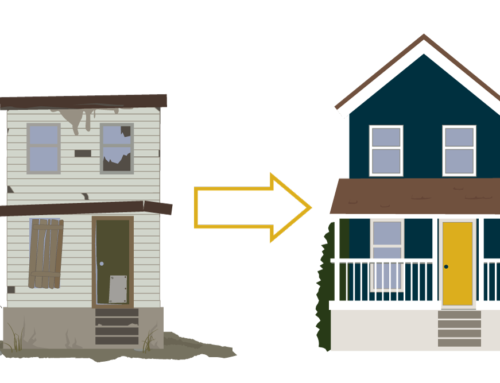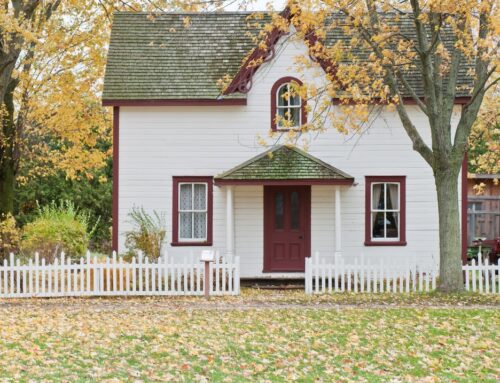Have you thought about flipping houses? For the right person, it can be a great investment decision
This business revolves around buying a house, repairing or renovating it, and then selling for a lucrative profit. It sounds simple enough doesn’t it?
It’s a great opportunity with a low barrier to entry. However, before you think about the money you’ll make, you have to think about the money you’ll spend.
What happens if you don’t have the money to make your investment? You can consider fix and flips loans.
Here’s what you need to know about how does a fix and flip loan work:
How It Works
Your first step is to choose a real estate lender or general financier to offer you fix and flip loans.
These loans usually have terms between 6 to 18 months, with 12 months being the most common. There are also fix and flip loans that offer extension options.
As a general rule, you’ll also have a fixed interest rate on your fix and flip loans.
Some loan options will let you pay the interest each month, and then pay the principal at the end.
Other loan options will let you pay the principal plus accumulated interest at the end of your term in one payment.
Make sure you research the terms before choosing your loan.
It’s also wise to go with a lender that requires you to have credentials. These lenders will only lend to seasoned flippers, real estate investors, remodelers, etc.
How Much Is It?
Fix and flips loans are intended to cover the cost of the house plus repair/renovation costs.
There are two types of loan amounts:
- Loan To Cost (LTC): This refers to a loan that is a percentage of the entire project’s estimated cost
- Loan To Value (LTV): This refers to a loan that is a percentage of the property’s estimated value after you sell
You’ll normally receive the loan amount that’s smaller between the two.
You want to plan ahead on how much you wish to invest in a project. This will be based on how much you expect to profit.
Documentation for Fix and Flip Loans
So what do you need to show to qualify for fix and flip loans?
For many lenders, you’ll need to show proof of experience within the real estate industry. This can include a real estate license, proof of flipping houses, or other work in the real estate industry.
Here are some other documents you should gather:
- Your ID and any documentation for your business entity
- Your (or your business entity’s) bank statements
- Sales contract for the house
- A list of all investment properties that you own
- Documentation for other fix and flip property projects
- Tax returns for you (and business if applicable)
- An estimation from a licensed contractor for the cost of repairs/renovation
Gather these documents together before you request your fix and flip loan. Your lender might also request further documentation which you can provide upon request.
Fix and flip loans can get transferred to you as an individual or to your LLC. Make sure to ask the lender beforehand which options they offer as some only allow transfers to LLCs.
Credit Scores
Your lender will likely want your credit report as further documentation. This shows your credit score and is an indicator of whether you can pay back debts.
As a general rule, you don’t need an outstanding credit score to qualify for a fix and flip loan.
However, it’s always best to try to improve your credit score and make it as high as possible.
How Much Can I Borrow?
How much will your lender give you for your fix and flip project?
Let’s go back to the LTC scenario. Let’s assume you need to pay $100K for a property. Then let’s assume that the cost of repairs and renovation for this property will be $10K.
Some lenders prefer to finance a particular percentage of the property. Then they’ll want another percentage for the repairs and renovation.
They might want to finance 90% of the property and 100% of the repairs and renovation.
In such a scenario, your loan will be $100K ($90K for the property + $10K for repairs and renovation).
You might also choose what you wish to receive a loan for. For example, in the previous scenario, you might not need a loan for the repairs/renovation cost.
Let’s now look at the LTV scenario. As a general rule, you’ll receive up to 75% of the project’s value after completion.
Let’s say you expect to sell the same property mentioned above for $500K after you fix and flip it. This means that $375K is what a lender will give.
However, between these two scenarios, the LTC is what you’ll get. This is because LTC ($100K) is a much lower loan than LTV ($375K(
Creating Your Business Plan
As a final step before you apply for your fix and flip loan, you should create a business plan for your project.
Your lender will need to see this to assess if giving a loan is worth their while.
Your business plan should be succinct but should consist of enough detail to leave no room for vagueness.
Here’s the basic information to include in your business plan:
- The address of the property
- Analysis of the neighborhood (value of properties, popularity, etc.)
- Sale prices for similar homes in the neighborhood (“Comps”)
- Your strategy for working and completing the project
- Dates of working and completion
- Financial projections for repairs and renovation
- Information on any assistants, contractors, partners, etc.
- A backup plan
- An appraisal on the current valuation of the property
- An appraisal on the estimated valuation of the property
You might wish to consult an attorney to draft the business plan. Make sure it’s fully prepared before presenting it to the lender.
Apply for Your Fix and Flip Loans Today
Are you ready to apply for your fix and flip loans now?
Start with scouting properties that you see potential with. Create a shortlist of properties and start gathering your documentation.
Draft your business plan and then you’re ready to speak to your lender. If you have experience in the industry, we’d love to discuss a loan.
Please see our guidelines on the fix and flip loans and let’s get in touch!






Stay In Touch